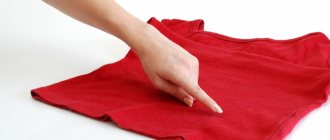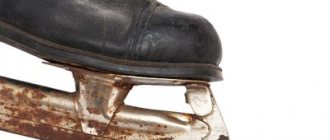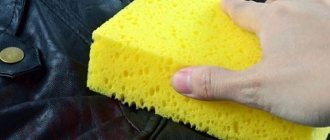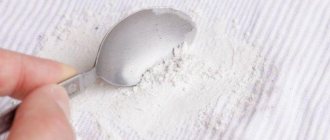In my autumn-winter wardrobe, cashmere has always occupied a dominant place. I really love this material Luxurious tactile qualities, great looks and warmth. Despite its elegant structure, the fabric warms perfectly, so cashmere clothes are loose, thin and slimming.
In a word, this material has no shortcomings. Except for one thing: you need to take care of it very carefully . I wash sweaters and dresses made from this delicate fabric carefully by hand and only occasionally in the machine. I'll tell you in more detail how I do it at home.
Means and methods
I wash a cashmere sweater by hand in the following order:
- I fill a large 20 liter basin with water at room temperature. Usually about 30 degrees . I don’t recommend doing it hot, it can negatively affect the structure of the material, it will subsequently shrink or stretch.
- I pour about half the bottle of shampoo . The standard container has a volume of about 200 ml.
- I thoroughly stir the mixture until smooth.
- I soak the cashmere item in water for several hours.
- Using an ordinary small kitchen sponge (its hard part), from the inside out, gently rub the dirtiest places - armpits, sleeves, neckline.
- I turn the basin into the bath and let it drain.
- I make new water at the right temperature.
- I lower the item into the basin and rinse it with gentle and gentle movements.
- I change the water several times.
- After the last procedure, I leave the product alone and lightly squeeze it on the bottom. Let the water drain for now.
@thelaundress.com
To dry, you do not need to wait for the liquid to completely drain. It is advisable that it does not flow down like a stream, but that the thing is simply wet. Next, I dry it using a certain technology, which I’ll talk about below.
Ironing
Manufacturers strictly prohibit ironing cashmere. Moreover, the material usually fits the body like a second skin. But if there is a need for ironing, remember a few recommendations:
- Cashmere cannot be ironed closely. It is better to steam it from a short distance (2-3 cm);
- the iron should be turned on to the lowest heat setting;
- you need to influence the material only from the inside out.
Tip: Small folds can be briefly pressed several times with a lukewarm iron.
How does the chosen method depend on the quality of the fabric?
I had several things from this material, and each behaved differently:
- The Chinese thin golf shirt with a declared 50% cashmere became covered with pills after 2 hours of wear, and after the fifth wash it completely looked like a rag.
- A sweater made from this wool from the legendary H&M brand lasted longer, one might even say it has outlived its usefulness. It was purchased at a company store in my city. Was washed neatly and according to the standard.
- I ordered a cashmere dress from the English F&F website and still wear it. Of course, I wash according to the algorithm; I never use hot water. But I dried it on a hanger, and even over the radiator. The short A-line dress only fits a little, but it fits almost as soon as you put it on and walk around a little in it. Moreover, the label said made in China!
In all cases, the composition was not 100% cashmere. I can only explain the phenomenon this way: China makes completely different products for export . What is intended for Russia and England has different production technology, composition of materials and their quality.
Therefore, I can safely say: the more “Chinese” the fabric, the more careful you need to treat it. I even washed the English dress in the washing machine on a delicate cycle at 30 degrees and without spinning. Thing!
What material do I have?
Let us note that cashmere is different from cashmere. Depending on its quality class, you need to choose a cleaning method suitable for the product so as not to spoil the item:
- High quality cashmere. Thin, long and strong fibers are used here. This product serves its owner for years. Only a small parasite, a moth, can seriously damage it. High quality fabric will not stretch or frizz. But it is precisely the latter fact that is the reason for the formation of annoying pellets. Top-class cashmere products are produced in Scotland and Italy. Another distinctive feature is their high price.
- Low quality cashmere. This is less valuable goat down, shorter and coarser fibers. Such a product tends to fluff, which is why it becomes covered in pellets when worn. May quickly lose shape if stored incorrectly (not on a hanger). An incorrectly selected cleaning option leads to more frizz. The producing country of inexpensive cashmere is China or Mongolia.
Washability depends on the quality of the material
How to wash cashmere and what not to do
To care for things made from the delicate wool of a high-mountain goat (yes, yes, that’s it!), special products are needed. I use a delicate liquid with a measuring cap and gentle properties. I like “Weasel wool and silk”, “Etel tenderness of silk and cashmere”, “Vorsinka”. I tried “BAS-cashmere” and didn’t like it, but maybe that’s why it didn’t work out that way for me.
In general, it is important to choose not only liquid powder, but also conditioner for delicate wool. Of the wonderfully “working” ones, I really liked “Laska” and “Lenore”. I also cheat and wash my cashmere sweater with “Eared Nanny” or “Stork” baby shampoo without additives or fragrances. However, fabric softener is a must; it makes the item soft and delicate.
I do not recommend washing in a washing machine. Even in delicate mode, problems are possible. In addition, you should not do this with regular powder, even if it is intended for children's things. Still, granules are an aggressive environment for fluffy material.
@marthastewart.com
Educational program on the washing machine
Is it possible to use it? The question is ambiguous. I tried, but my heart bleeds when I hear the drum “working off” the sweater against the walls, even on the delicate mode. In addition, after drying, a number of pellets appeared under the arms . Perhaps it’s the quality of the material, but I decided not to take any more risks.
So, it is better to wash cashmere items by hand in a special product or in baby shampoo and conditioner . Before you start, you need to do a few more manipulations.
Important! A cashmere coat should definitely be dry cleaned! At the same time, only to an establishment that is popular and treats its work responsibly.
@cleanmama.com
Step-by-step instruction
Washing cashmere is a delicate matter, so it is important to follow all the conditions of the process. If you have a choice between manual and machine cleaning, then the first method is preferable, since the chance of damaging the fabric during automatic washing is greater.
The main rule for both options is that the water should not be ice cold or hotter than 30°C. Experts recommend washing an item no more often than every 7-10 wears, which, ideally, should not be daily.
Suitable remedy
The detergent is no less important than the process itself, so before you start cleaning in any way, choose a suitable product:
The powder should not be chosen because the granules are too large, which are not suitable for cool water and can settle on the material.- The best option is a specialized liquid gel for cashmere and wool. It will carefully clean the fibers and help maintain their original size.
- Children's hair shampoo - mild ingredients designed for children will not harm the fabric.
- Dish soap with hand protection - these soaps are less aggressive and are suitable for delicate washing.
Bleach and stain removers are prohibited! The juice of half a lemon added to the water will add additional softness, and it will also get rid of the smell of sweat.
How to wash by hand?
This method is more gentle, however, there are some nuances. For starters, water. It shouldn't be hard, so chlorinated sewer fluid won't work.
It’s better to let the water stand for a couple of hours and pass it through a filter. Bottled or distilled water will also work.
Cashmere does not react well to changes in temperature, so the water during washing and rinsing should be at the same temperature.
Having poured the required water into a basin, the pre-selected product is added to the liquid, and not on the item, and then whipped with vigorous movements until foam appears. Do not pour too much product, otherwise the fabric will have to rinse for a long time.
Having completed the preparatory steps, it’s time to move on to washing:
Place the item turned inside out into a basin with soapy water and leave to soak for 10-15 minutes;- After this, the fabric is washed with light massage pressure. It is strictly forbidden to rub, twist or pull clothes;
- replace soapy water with clean water, rinse with the same movements;
- wash as many times as necessary to completely remove the cleaning agent;
- The final rinse is carried out using fabric softener.
How to prepare an item for the procedure?
Before washing, I lay out the sweater or dress on a horizontal surface and inspect it. If I see pellets formed, I carefully cut them off with a special machine, tape or razor. I carefully moisten the dirty spots and let them soak in moisture for about 30 minutes. After that, I scrape off the dirt with the hard side of a new kitchen sponge.
Important! If the stains are stubborn, it is better to moisten them with water and cover them with shampoo foam. I recommend “solving” the issue with stubborn stains with dry cleaning.
@thelaundress.com
Cleaning stains
If there are individual stains and dirt, you must first clean them and only then do a general wash. There are many means for cleansing, here are the simplest methods:
- ordinary water. Wet a sponge or soft brush in warm water and wipe off the dirt;
- baby or laundry soap. Rub soap onto the stain and wait half an hour. Next, rinse off the soap with a sponge and warm water until the area is clear of soap;
- glycerin and ammonia. A mixture of these substances in a 3:1 ratio will clean the stain; just rub it with this mixture. The procedure can be repeated if necessary.
If these methods do not help, the stain will have to be cleaned with more powerful products or taken to dry cleaning.
Machine washable
Means and methods
I wash a cashmere sweater by hand in the following order:
- I fill a large 20 liter basin with water at room temperature. Usually about 30 degrees . I don’t recommend doing it hot, it can negatively affect the structure of the material, it will subsequently shrink or stretch.
- I pour about half the bottle of shampoo . The standard container has a volume of about 200 ml.
- I thoroughly stir the mixture until smooth.
- I soak the cashmere item in water for several hours.
- Using an ordinary small kitchen sponge (its hard part), from the inside out, gently rub the dirtiest places - armpits, sleeves, neckline.
- I turn the basin into the bath and let it drain.
- I make new water at the right temperature.
- I lower the item into the basin and rinse it with gentle and gentle movements.
- I change the water several times.
- After the last procedure, I leave the product alone and lightly squeeze it on the bottom. Let the water drain for now.
@thelaundress.com
To dry, you do not need to wait for the liquid to completely drain. It is advisable that it does not flow down like a stream, but that the thing is simply wet. Next, I dry it using a certain technology, which I’ll talk about below.
How does the chosen method depend on the quality of the fabric?
I had several things from this material, and each behaved differently:
- The Chinese thin golf shirt with a declared 50% cashmere became covered with pills after 2 hours of wear, and after the fifth wash it completely looked like a rag.
- A sweater made from this wool from the legendary H&M brand lasted longer, one might even say it has outlived its usefulness. It was purchased at a company store in my city. Was washed neatly and according to the standard.
- I ordered a cashmere dress from the English F&F website and still wear it. Of course, I wash according to the algorithm; I never use hot water. But I dried it on a hanger, and even over the radiator. The short A-line dress only fits a little, but it fits almost as soon as you put it on and walk around a little in it. Moreover, the label said made in China!
In all cases, the composition was not 100% cashmere. I can only explain the phenomenon this way: China makes completely different products for export . What is intended for Russia and England has different production technology, composition of materials and their quality.
Therefore, I can safely say: the more “Chinese” the fabric, the more careful you need to treat it. I even washed the English dress in the washing machine on a delicate cycle at 30 degrees and without spinning. Thing!
Some important laws of drying
You can’t wring out the item, just press it down a little on the side of the bathtub and let it drain. In addition, it is strictly not recommended to hang wet clothes on hangers , otherwise they will stretch out. And you can’t put it on the battery either; drying should be done in a well-ventilated area, avoid direct sunlight.
I use two large terry towels for a damp sweater. I do this:
- I lay out one towel on the table;
- I straighten the thing on it;
- cover with another towel;
- I roll up a loose roller and leave it for half an hour to an hour;
- I change towels several times;
- I finish drying the sweater in a horizontal position.
@thelaundress.com
A must read!
- Before starting the procedure, carefully read the product label . Very often, the delicate down of the alpine goat cannot be washed at all. In this case, dry cleaning in an appropriate establishment is indicated.
- Often cashmere items contain not only down, but also other components. Keep in mind that if you have silk, then even when washing with your hands, the ink of the print may “float”, and if it is viscose, then only dry cleaning is needed.
- Choose a product of the appropriate color . For example, if the conditioner is blue or pink, and the item is white, this will make its shade different, no matter what the manufacturers say.
- Do not change the water temperature during washing . I usually do this at a clear 30 degrees. Once I rinsed it in plain cold water from the tap, as a result, the product shrank three sizes.
- Under no circumstances should you wash clothes made from delicate down with other items!
- Do not squeeze the product . That is, you cannot rotate the rollers and other shapes. You can gently rinse consistently and transversely, and that’s it.
- If there is any decoration on the clothing, it is advisable to cut it off to avoid stains. The metal can unexpectedly react with the product and produce an unpleasant result.
- Are you confident in the quality of your product and decide to machine wash it? Place the item in a special bag , in this case the selected cycle will be even more delicate.
- It is better to store cashmere clothes folded into a roll to avoid the formation of creases. For the winter, I wrapped my coat in thin tissue paper, because condensation, mold and other “delights” can appear in a plastic cover.
- By the way, if you notice a moth in the closet, you can cool the item thoroughly - put it in a bag and in the freezer for a day.
- It is not recommended to iron cashmere clothes, only steam them with a special device . The steam will fluff up the pile beautifully.
My life hack : in order not to wash dark cashmere clothes often, you can wear a thin basic T-shirt underneath. Most often my clothes get dirty in the armpit area, and having underwear helps a lot in this case.
History of topless fashion: who undressed first and for what?
How to fix flip flops through your finger
Basic washing rules
Before moving on to describing the process, we will introduce the reader to its main rules - how to wash cashmere items:
- In order for the underwear to remain attractively fresh, it must be washed every 5-6 wears.
- For thick outerwear, dry cleaning is recommended. This applies to all products with a gasket.
- Sweaters, pullovers, sweaters and berets can be washed if the manufacturer does not prohibit it. He can recommend not only hand washing, but also machine washing.
- Before wet cleaning, knitwear should be turned inside out.
- During the process, you should not strongly rub, twist or otherwise deform the material.
- Wash only in cool (about 30 degrees) water.
For some items, dry cleaning only is possible!











